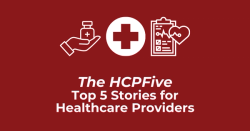
OR WAIT null SECS
sUA Achievement Linked to Treatment Adherence, Antihypertensive Medications in Patients with Gout
Patients with gout achieving target serum uric acid levels showed good adherence to urate-lowering therapy, used antihypertensive agents, and lacked a family history of gout.
Results of a multivariate regression analysis demonstrated patients with gout who were able to achieve target serum uric acid (sUA) levels at 6 months had good adherence to urate lowering therapy (ULT), were treated with an antihypertensive agent, and did not have a family history of gout, according to a study published in Scientific Reports.1
Despite the importance of keeping sUA levels <6 mg/dL, which has been shown to reduce flare, size of tophi, and comorbidities, as well as prevent structural damage, many patients do not achieve this target even with ULT. Previous findings have shown 37.7% of patients reached target levels by month 6 and 26.2% at month 12. Clinical factors associated with reaching target sUA levels have included a lower comorbidity index, more outpatient visits, employment, a patient’s age at onset, and baseline sUA level. However, there has not been any conclusive consensus on these results.2
In the prospective study, co-led by Hyo Jin Choi, MD, PhD, professor and head of the Division of Rheumatology at Gachon University Gil Medical Center, South Korea, data were pulled from the Urate-Lowering TheRApy in gout (ULTRA) registry, a nationwide cohort enrolling adult Korean patients with gout who initiate ULT.
Information including demographics, medication, clinical, and laboratory data were obtained at baseline and at month 6. Eligible patients were aged ≥18 years, met the 2015 American College of Rheumatology (ACR)/European League Against Rheumatism (EULAR) classification criteria, and had ≥1 of the following: ≥2 gout flares in a year, erosions in hand and food x-rays, presence of tophi, and other reasons for initiating ULT.
At month 6, patients were categorized into 2 cohorts: target achievers, defined as sUA levels <6 mg/dL) and non-achievers.
A total of 117 patients were included in the analysis, with a mean age of 56.1 years, and 88% were male. At the 6-month mark, 70.9% (n = 83) achieved target sUA levels. Investigators noted the percentage of patients able to reach this target was higher than previous studies because the participating hospitals were predominantly secondary and tertiary medical institutions.
Patients in the target achiever group had better drug adherence, defined as ≥80%, to ULT compared with non-achievers (97.6% vs 76.5%, respectively; P <.01), which is higher than other research. Again, investigators believe this is due to factors such as the short follow-up period and including rheumatologists as the primary healthcare provider, which has been shown to increase the odds of achieving target levels compared with primary care physicians.
Patients who achieved target levels were less likely to have a family history of gout (10.8% vs 32.4%, respectively; P <.01) and were more likely to use an antihypertensive agent (59.0% vs 38.2%, respectively; P = .03) compared with target non-achievers.
Investigators noted the prospective cohort design as a strength of the study. However, generalizability, selection bias, and a small sample size were viewed as limitations. Additionally, the short follow-up period hindered analysis of long-term outcome differences, although these issues are expected to be resolved in the future as this is an ongoing study. Investigators were unable to measure drug adherence at ULT initiation as it was only collected at month 6.
“These findings suggest that adherence to ULT is important for achieving the target sUA level and that more attention should be paid to patients with a familial history of gout,” investigators concluded.
References
- Do H, Choi HJ, Choi B, et al. Factors for achieving target serum uric acid levels after initiating urate-lowering therapy in patients with gout: results from the ULTRA registry. Sci Rep. 2023;13(1):20511. Published 2023 Nov 22. doi:10.1038/s41598-023-47790-6
- Quilisadio, J. E. C., Salido, E. O. & Penserga, E. G. Achievement of the target serum urate level among patients with gout treated with allopurinol or febuxostat in an arthritis clinic in the Philippines. Mod. Rheumatol. 31, 755–761. https://doi.org/10.1080/14397595.2020.1800557 (2021).


